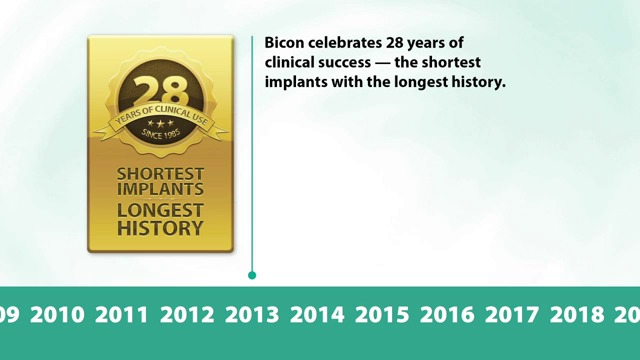
|
SHORT® Dental Implants: Does Size Really Matter? [HD]
ALL-NEW AND UPDATED FOR 2016! In this video, Dr. Bill Schaeffer of London discusses short implants, why they work, and the unique advantages they offer to the clinician. Dr. Schaeffer also conducts a review of literature and discusses his first-hand experiences with short dental implants. |
|---|---|

|
The History of The Bicon Design
The Bicon System has its origins dating back to 1968. Initial research was conducted at Battelle Memorial Institute in Columbus, Ohio by Thomas Driskell. The original implant design of Mr. Driskell used high density aluminum oxide as the implant material. In 1981, Driskell introduced an implant named Titanodont which was made from titanium alloy. Then, in 1985, he perfected his titanium implant design by patenting the DB Precision Implant, which is known today as the Bicon Dental Implant System. Whether Driskell knew it or not at the time he developed this implant system, his design coupled with the clinical support of Bicon has come to revolutionize implant dentistry by offering the innovations of SHORT® Implants, Integrated Abutment Crowns™, SynthoGraft™, and TRINIA™ and more. |
Introduction to Bicon SHORT® Implants
This video provides an introduction to Bicon SHORT® Implants, their history, the science behind their design, and how they can maximize implant placement possibilities and minimize the need for grafting procedures. |
|
SHORT® Dental Implants: Does Size Really Matter?
In this video lecture, Dr. Bill Schaeffer of London, England discusses short implants, why they work, and the unique advantages they offer to the clinician. Dr. Schaeffer also conducts a review of literature and discusses his first-hand experiences with short implants. |
|
Crown-Implant Ratio: Not a Factor with the Bicon System
Dr. John SchulteUniversity of Minnesota |